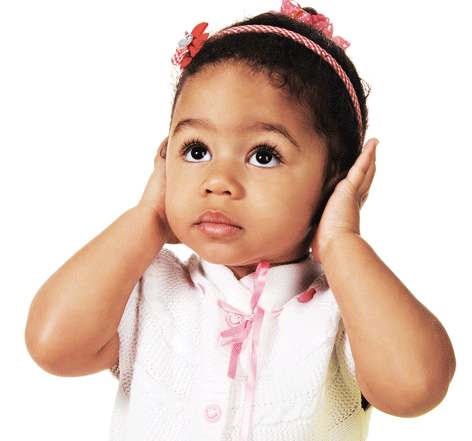How to Spot Hearing Loss in Your Baby
December 01, 2016
Even in the earliest months of life, babies begin learning how to communicate by listening to and imitating the sounds they hear around them. But if your baby has a hearing problem, his or her ability to speak and understand language could be affected.
That’s why it’s important for parents to recognize the signs of hearing issues early. About half of children with hearing impairments have no risk factors for it, says Todd Otteson, MD, Chief of Pediatric Otolaryngology at University Hospitals Rainbow Babies & Children’s Hospital.
Early detection and treatment of hearing impairment can help avoid speech delays and other communication problems. But experts say many hearing-impaired children aren’t diagnosed early enough. This could be because many parents don’t know the signs of hearing loss. Hearing loss can also accompany other disabilities and could be overlooked.
Dr. Otteson offers this checklist to help you recognize signs of a hearing problem throughout your baby’s first year.
Birth to 3 Months
At birth to 3 months, does your child:
- React to loud sounds?
- Seem soothed by your voice?
- Turn his or her head when you speak?
- Smile when spoken to?
3 to 6 Months
At 3 to 6 months, does your child:
- Look up or turn toward a new sound?
- Respond to “no” and changes in tone of voice?
- Imitate his or her own voice?
- Enjoy rattles and other sound-making toys?
- Begin to repeat sounds such as ooh and ba-ba?
- Seem scared by loud sounds?
6 to 10 Months
At 6 to 10 months, does your child:
- Respond to his or her name, a ringing phone or someone's soft voice?
- Know words for common things such as cup or shoe and sayings such as bye-bye?
- Make babbling sounds, even if alone?
- Start to respond to requests, such as “come here”?
- Look at things or pictures when someone talks about them?
10 to 15 months
 At 10 to 15 months, does your child:
At 10 to 15 months, does your child:
- Play with his or her voice, enjoying the sound and feel of it?
- Point to or look at familiar objects or people when asked to do so?
- Imitate simple words and sounds, and use a few single words meaningfully?
- Enjoy games like peek-a-boo?
“If you answered no to any of these questions, talk with your pediatrician,” Dr. Otteson says.
“Even if it’s not a hearing loss issue, there may be another medical problem that is hindering your child’s development,” he says.
Do you or a loved one have an enlarged vestibular aqueduct?
Physician-scientists at University Hospitals have launched a patient regisry for people who have an enlarged vestibular aqueduct (EVA) – a rare condition affecting fewer than 200,000 people nationwide that can lead to total hearing loss. Currently, no treatments exist to prevent or reverse EVA-associated hearing loss, affecting the quality of life for children diagnosed with EVA and their families. Find out more about EVA and how you can support efforts to increase medical knowledge about it at Rainbow.org/EVAResearch.


